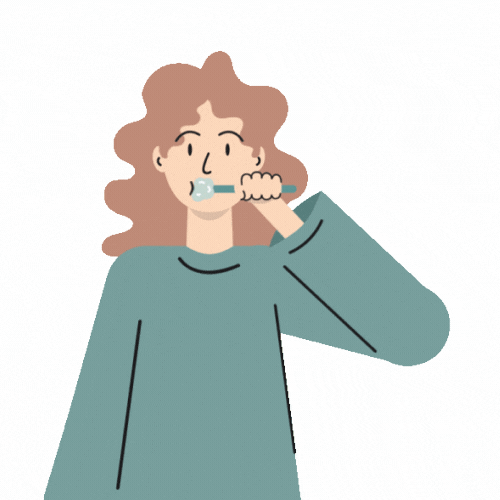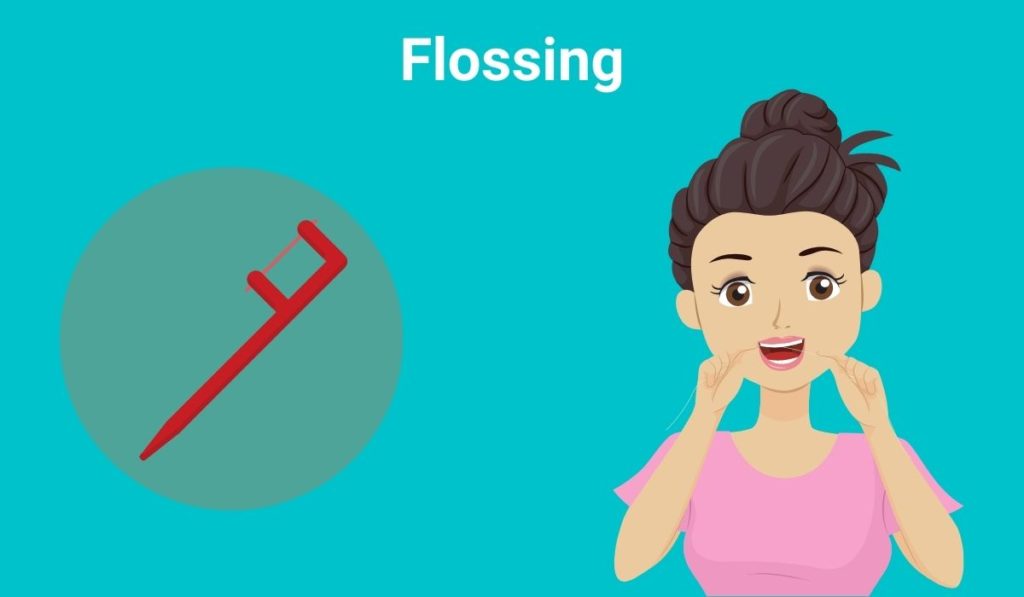
POST CONTENTS
How to Protect Your Teeth From Brushing?
Some of the key points are mentioned below to protect gum and enamel from decay.
- Gems in your mouth
- Brush to be used
- Toothpaste
- Where should the brush reach?
- Tongue
- Flossing
- Oral mouth wash
- How many times a day?
- How to protect your teeth and gums from brushing?
Gems in Your Mouth
Every single tooth in your mouth is a gem.
In humans, i.e., in us, there are two sets of dentition. Dentition refers to teeth. Two sets of dentition are
- Deciduous dentition and
- Permanent dentition.
Deciduous dentition is the milk teeth. All Milk teeth are teeth present in a child from 2 to 6 years of age. All of these teeth are shed at 12 years of age.
Permanent teeth are more important than primary. It provides chewing, speech, and aesthetic function till it collapses.
In old age or trauma can lead to its extraction. These are 32 in number. 3rd molars are extinguishing by evolution.
These are 4 in number. Sometimes these are extracted for various treatments.
A tooth has four intricate tissue layers inside of it. Three are hard and one soft tissue.
- Enamel: It is the crown part or part of teeth visible in the mouth.
- Dentin: It is a bulky part present in the crown part and root.
- Pulpit: It is a nourishing structure that makes teeth a living structure. It is only soft tissue.
- Cementum: It is the hard tissue that supports the root. The root is not visible. It is inside gums fixed in the socket.
With aging, all tissue degrades. All tissues except Enamel have regeneration capacity. Enamel is most harmed in aging.
As we know, Enamel is the crown part that helps you to do every function. For eating and talking crown is functioning.
These are vulnerable to acids, alkaline substances, and bacteria.
Moreover, brushing with high pressure on teeth harms teeth. So, to protect the tooth from brushing, let’s proceed.
Brush to Be Used
For brushing and cleaning our teeth, we need a brush. It’s essential which brush you choose. Soft bristle brushes are usually the best.
Generally, local toothbrushes are a bit harder than brands.
Electric toothbrushes are also a good option for cleaning the tooth. Though it is expensive, it has advantages too.
Electric toothbrushes have bristles rotating and vibrating for proper cleaning. It is more efficient than a manual brush in removing plaque.
It beeps at high pressure when applied to teeth. It is adjustable according to teeth sensitivity. So, you can also use an electric toothbrush.
And for persons with arthritis or any problem in moving their hands, electric toothbrushes are the best option.
We need something with a brush to make it lubricant. Yes, that is toothpaste. Not only does it lubricates our brushing, but it has some suitable substances for our teeth. Now the question is which toothpaste?

Toothpaste
Toothpaste is a substance that cleans and polishes our teeth. It promotes oral health. It helps in the removal of dental plaque and food from the teeth.
It fights bad breath, i.e., halitosis. Bad breath prevails the effect of paste. I would give its remedy following paragraphs.
Toothpaste contains fluoride, which is essential for a tooth. It prevents the tooth from decay and gum diseases.
All toothpaste is good despite having some harmful chemicals. Best is Vicco Vajradanti. It has all-natural content.
It has fluoride content. You can also use Dabur Dantmanjan. It also contains natural substances.
The amount of toothpaste should be pea size for an adult. For children, it is less than pea-size. If you put extra paste, it is going to be wasted.
So, we have got our toothbrush with paste on it, but where should the brush reach?
Where Should the Brush Reach?
By saying where the brush should reach, we want to discuss the proper method of brushing.
All of us brush at least once in the morning, but we make some common mistakes that should be observed and corrected. Some of the common mistakes are:
We sometimes or always take more amount of toothpaste (more than pea size). As I said earlier, it should be pea size for adults and less than a pea size for children.
We don’t think there is a need to change our toothbrush after three months or if its bristles are torn. It is vital to replace it because overtime a period many harmful bacteria have grown on it.
We hardly disinfect our toothbrushes. After 1st use of a new toothbrush, bacteria and microorganisms start growing on it. These come from surroundings. We don’t have to disinfect it every day; we can perform it on weekends. Method to disinfect a toothbrush
- Rinse your toothbrush under hot or normal water, then tap it so that some debris accumulated while brushing your teeth comes out.
- Take a glass of water and add one spoon of hydrogen peroxide. You can use vinegar or mouthwash, or brush sanitizer in place of hydrogen peroxide.
- Wash the brush and let it dry.
Note: don’t keep the brush in a single-family stand as it can spread infections. Keep your brush in your personal place.
We put a high pressure to clean our teeth. It is a myth that putting high pressure by a brush would clean efficiently. Instead, it would harm your teeth.
High pressure during brushing your teeth will degrade your enamel or crown part.
In the long run, it can lead to extractions (tooth removal). So, put very little pressure on manual brushing.
The electric brush, automatically warns if pressure is too high.
We often leave surfaces or surfaces (which are to be cleaned) due to negligence or time crisis. There are three surfaces for each upper teeth and lower, which should be cleaned with a brush. In total, there are six surfaces to be cleaned. Three surfaces are:-
- The outer side is between teeth and gums.
- The inner side is towards the tongue or palate.
- Chewing surface of back teeth (molars and premolars).
So, we have known the misconceptions now.
Let’s proceed with the method of brushing
- Brush to be aligned 45 degrees from the tooth. This helps to clean gums and mostly the junction between gums and teeth.
- You can start from the upper teeth and right side. First, clean the outer surface by rotating your brush, not just to and fro movement. This movement helps in better cleaning.
- Then after cleaning the extreme side, you clean the chewing surface and then the inner surface. Mind it; you have to use slight pressure and short, gentle strokes to clean along with the rotatory movement.
- Then, you can clean the front upper teeth. It has two surfaces that are outer and inner. Use up and strokes for cleaning, especially the inner surface.
- Then clean the left side of the upper teeth same as of right side.
- Now, we are left with lower teeth starting from the right side and making it towards the left, cleaning all outer, inner, and chewing surfaces.
- We are done with teeth, but two things are left to clean: the tongue and gaps between teeth and the posterior-most surface of the last teeth. Later, we can clean by flossing.
Note: In the electric toothbrush case, you didn’t have rotated because the bristle is rotating by machine.
Tongue
The tongue is a muscular organ, and it is one of the sense organs. It gives the sensation of taste. Whether the food is bitter, salty, sweet, sour, or the food is excellent, or disastrous.
While feeding ourselves some amount of food, debris and micro-organisms stick to the surface of the tongue.
These sticky substances cause terrible breath hereafter. So, it is vital to clean our tongue after.
The best method to clean the tongue is to scrap it with a scrapper. Or, else you can use a brush to clean it.
Don’t scrub too deep inside. But up to the end of the tongue in the mouth, it should be cleaned. Most of the debris is at the end of the tongue.
Flossing
Flossing helps to remove plaque and food particles that a toothbrush cannot clean. These are gum lines between your teeth.
Flossing is to be done daily and for once. You have to be careful while doing it because it can cause minor cuts, leading to infection.
Flossing is done with 18 inches long floss. Floss is thin wire-like that can be of nylon or PTFE floss.

Method of flossing:
- Wind most of the floss around each middle finger; leave 1 or 2 inches of it for work.
- Hold the floss between your thumb and index fingers and slide it gently up and down between your teeth.
- Gently curve the floss around the base of each tooth. Never snap or force the floss; this can produce bruises.
- Use clean sections of floss while moving tooth to tooth.
- To remove the floss leave one end and take it away gently from the other end you are holding.
Oral Mouthwash
I wouldn’t recommend using it because it contains many harmful chemicals for beneficial bacteria present in the mouth. You can use it once in 2 days.
And if you are facing lousy breath problems even after cleaning correctly. Drink more water frequently to make sure the mouth doesn’t dry.
Eat fruits oxides and cleans your mouth, and make it fresh.
Yes, you can replace mouthwash with saunf zeera and elaichi. Natural elaichi not silvered one. You can make it handy and use it when required.
If someday you forget brushing, you can use cucumber, take a slice, keep it in your mouth for 10 seconds, and you are good to go.
How Many Times a Day?
Two times a day
At night it is vital to clean after dinner before sleep cause you would sleep with bacteria and plaque, which would make rotten teeth the whole night.
In the morning, we naturally do it.
After eating, never immediately brush. Some enzymes digest food along with good bacteria, so take a gap of 1 to ½ hour, then brush.
How to Protect Your Teeth and Gums by Brushing?
150 to 200 grams pressure to be applied while brushing. More than 200 grams will make you suffer. Gums problem and erosion of crown would be the effect.
While cleaning your teeth with your finger, use your middle finger as your index finger applies much pressure.
Chew On This: Best Food for Your Teeth
The Bottom Line
Brushing your teeth is a common but an essential topic. Though brushing is our daily habit, how effectively brushing is to be done?
So, remember these points while brushing your teeth, how many times should brush? Which toothpaste is good for you? How much pressure should apply?
